The Great Whiskey Breakdown: What Separates Scotch from Bourbon (Besides Geography)
.jpg)
At Aged in Oak, we love watching that moment when someone takes a sip, pauses, and says, “Okay…what exactly am I tasting?” Whether you're new to the world of distilled spirits or deep into collecting, understanding the real differences between scotch, bourbon, and whiskey can make every tasting more intentional — and every bottle more exciting to explore.
Let’s break it down in a way that feels simple, educational, and most of all, enjoyable.
Whiskey: The Big Umbrella
Whiskey (or “whisky,” depending on where it’s crafted) is the broad category that includes everything from bourbon to scotch to rye. If it’s made from grain, distilled, and aged in a barrel — it’s whiskey.
The spelling gives you a hint about its origin:
- Whiskey: Commonly used in the U.S. and Ireland
- Whisky: Typically used in Scotland, Canada, and Japan
So when you walk into Aged in Oak and see shelves lined with different names and styles, know that they’re all part of the same big family — each with its own personality.
Bourbon: America’s Sweetheart
If whiskey is the family name, bourbon is the outgoing cousin with a warm, sweet disposition. Legally, bourbon must follow a specific set of rules — after all, Americans love a good standard:
- It has to be made in the United States
- At least 51% corn in the mash
- Aged in new, charred oak barrels
- Distilled and bottled at specific proofs
That high corn content, paired with brand-new charred oak, creates the classic flavor profile people love: vanilla, caramel, baking spices, and toasted oak.
Bourbon tends to be approachable yet bold. It’s the bottle you reach for when you want something comforting, complex, and unmistakably American. When you browse our auctions or sample a flight in the tasting parlor, you’ll notice bourbon often leans rich, round, and crowd-pleasing.
Scotch: Old-World Craftsmanship
Scotch whisky comes exclusively from Scotland — and with it comes centuries of tradition, regional variation, and some of the most distinctive flavors in the whiskey world.
To be called Scotch, it must:
- Be distilled and aged in Scotland
- Mature for a minimum of three years
- Be made primarily from malted barley
But the fun begins with the regions. Each Scottish region brings its own personality:
- Islay whiskies can be smoky, salty, and bold
- Speyside tends to offer fruit-forward, elegant profiles
- Highlands are often richer and more robust
While bourbon leans sweet, scotch leans complex. Think honey, dried fruit, malt, heather, and — depending on the distillery — varying levels of peat smoke.
At Aged in Oak, we love highlighting scotches for their depth and their ability to surprise even seasoned bourbon drinkers. The aging process in used barrels (often ex-bourbon or sherry casks) adds layers of nuance without overpowering sweetness.
The Nitty-Gritty: What Really Separates Them
If you’ve ever wondered why bourbon tastes sweeter than scotch… or why scotch can be smoky while bourbon never is… this is where the magic lives.
1. Mash Bills (What They’re Made Of)
- Bourbon: At least 51% corn → sweetness, richness
- Scotch: Primarily malted barley → grain complexity, nuttiness, malt character
- Whiskey (general): Can be corn, barley, rye, wheat depending on style
Different grains = different sugars = different fermentation flavors.
2. Barrel Rules
- Bourbon: Must use new, charred American oak
- Creates caramel, vanilla, oak spice
- Faster extraction, deeper color
- Scotch: Uses previously filled barrels (bourbon, sherry, wine)
- Creates subtle, layered flavors
- Less sweetness, more nuance
Barrels do far more than hold the spirit — they’re arguably the biggest flavor shaper.
3. Climate & Aging Speed
- Kentucky: Hot summers, cold winters
- Whiskey expands and contracts aggressively → faster aging
- Whiskey expands and contracts aggressively → faster aging
- Scotland: Cooler, gentler climate
- Slower oxidation → softer development
Climate is a secret ingredient no distiller can control.
4. Distillation Style
- Bourbon: Typically distilled to a lower proof to keep grain flavor strong
- Scotch: Distilled higher but still preserves malt character
- Traditional Scotch pot stills add oily, textured mouthfeel
- Column stills (often used in American whiskey) create lighter spirit
5. Smoke Factor (Or Lack of It)
- Scotch may use peat, a natural fuel source, to dry barley → smoky, earthy flavors
- Bourbon never uses peat → no smoke
- Other whiskeys vary by region
That one choice — peat or no peat — dramatically changes the glass.
Why Knowing the Difference Matters
Understanding the basics helps you choose bottles that fit your taste — and discover new styles you didn’t know you’d love.
- If you enjoy warm sweetness → try bourbon
- Curious about layered, old-world character → explore scotch
- Want to branch into other categories → start with whiskey
In our auctions, on our shelves, and behind the tasting bar, every bottle has a story. And knowing the difference between scotch, bourbon, and whiskey makes that story even richer.
If you ever want help choosing your next pour — or want us to guide you toward something new — just ask. That’s why we’re here.
Related Reading:
The Bourbon Family Tree: Exploring the Branches of America’s Favorite Spirit
Barrel Finishes 101: The Secret Influence of Wood
Pour Decisions Made Easy: Our Approachable Guide to Bourbon Basics and Bottles Worth Starting With
More Fresh Pours and Perspectives

Inside the Auction: Rare Scotch, Collector Trains & 200+ Bottles Ready for the Taking

Inside the Auction: Rare Scotch, Collector Trains & 200+ Bottles Ready for the Taking

The Bourbon Family Tree: Exploring the Branches of America’s Favorite Spirit

The Bourbon Family Tree: Exploring the Branches of America’s Favorite Spirit

From Distillery to Digital — How Bourbon Collecting Moved Online

From Distillery to Digital — How Bourbon Collecting Moved Online

Blanton’s Bourbon: History, Expressions, and the Hype Behind America’s Most Collectible Bourbon

Blanton’s Bourbon: History, Expressions, and the Hype Behind America’s Most Collectible Bourbon

Inside the Auction: Iconic Bottles, Bourbon Legends & the Thrill of the Bid

Inside the Auction: Iconic Bottles, Bourbon Legends & the Thrill of the Bid
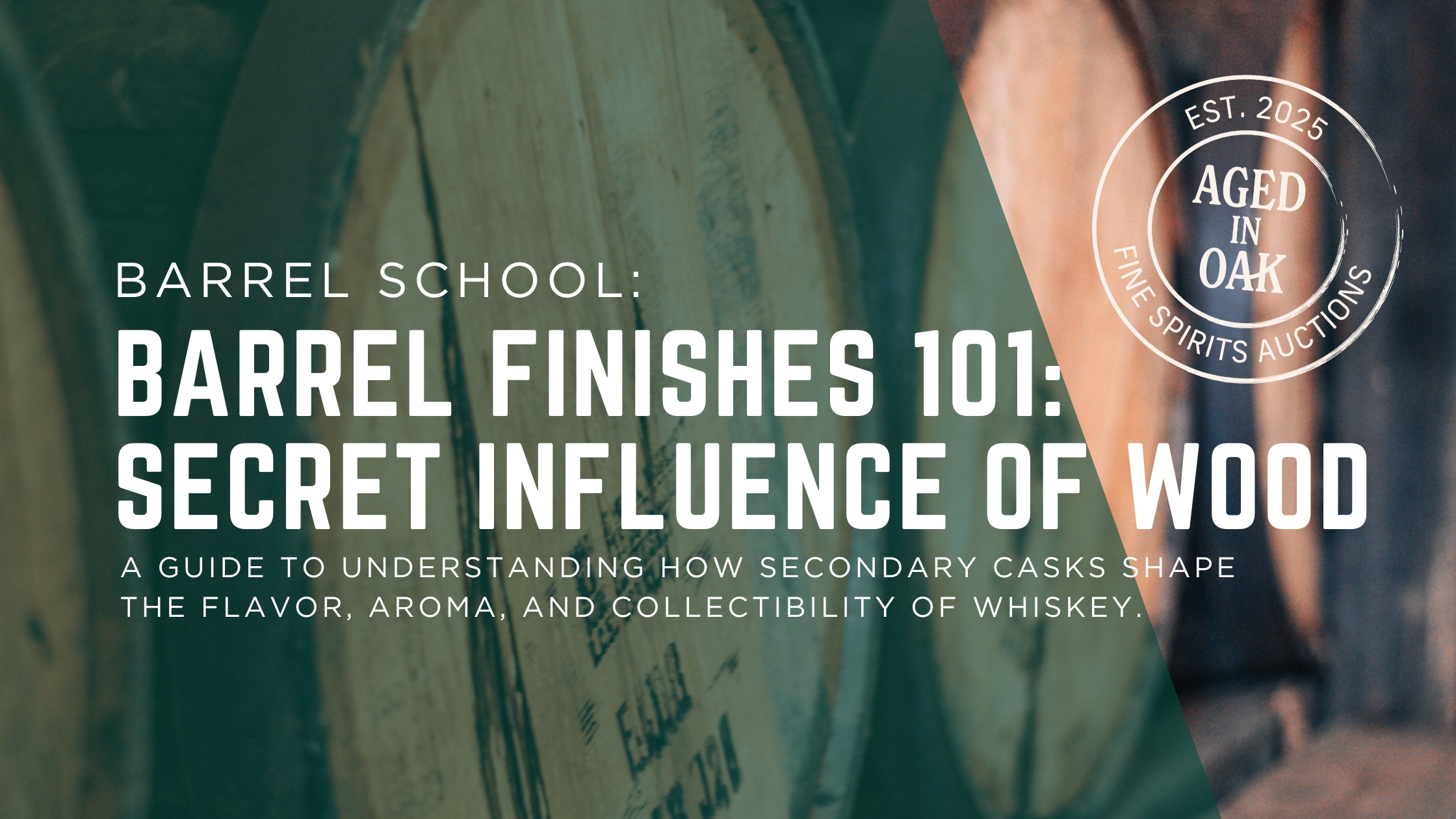
Barrel Finishes 101: The Secret Influence of Wood

Barrel Finishes 101: The Secret Influence of Wood
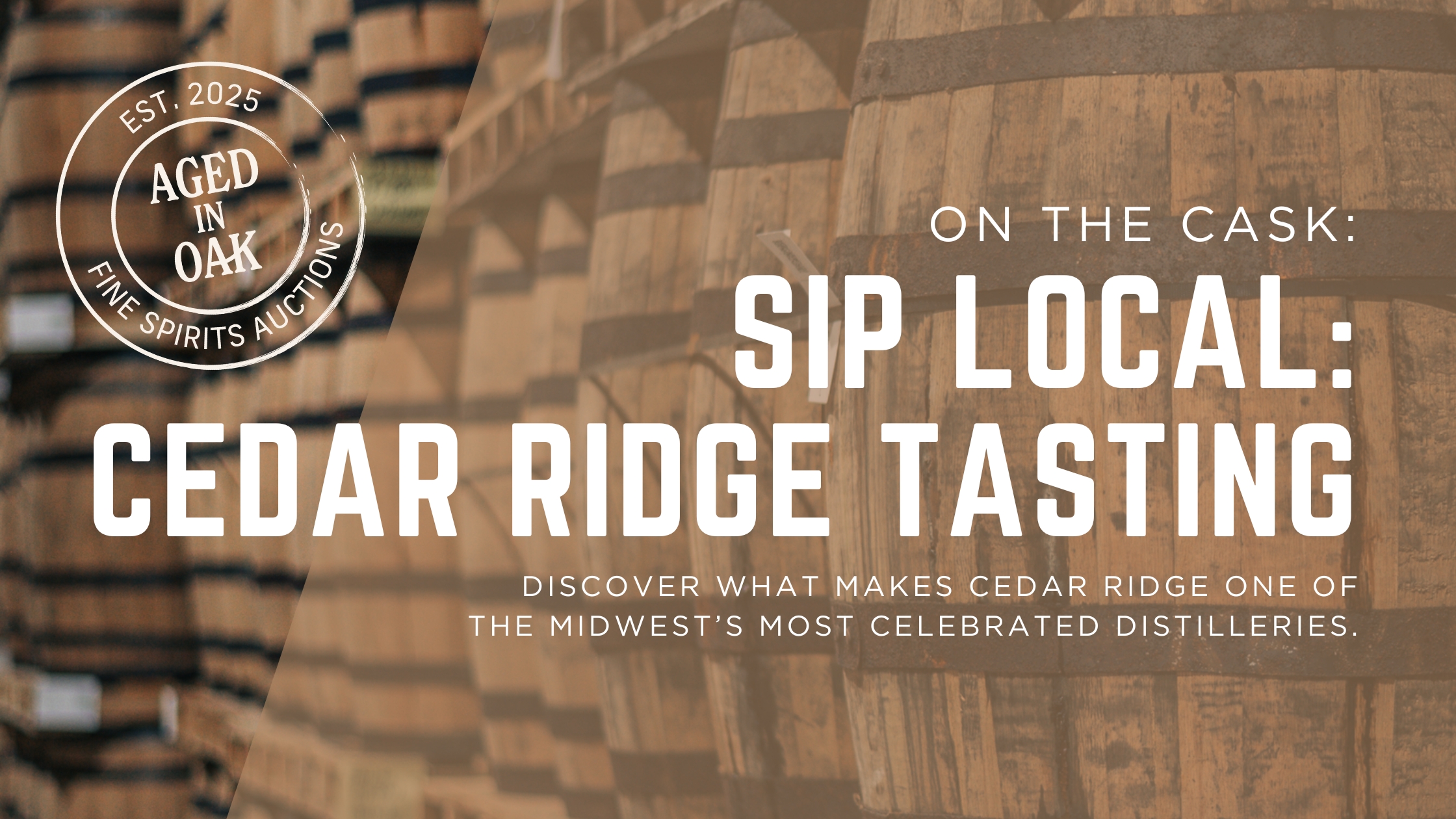
Sip Local: Cedar Ridge Distillery Tasting at Aged in Oak

Sip Local: Cedar Ridge Distillery Tasting at Aged in Oak

Inside the Auction: Powerhouse Picks, Proof, and the Joy of the Bid

Inside the Auction: Powerhouse Picks, Proof, and the Joy of the Bid

The Thrill of No Reserve: Why These Bourbon Auctions Keep Collectors Coming Back

The Thrill of No Reserve: Why These Bourbon Auctions Keep Collectors Coming Back

The Thrill of No Reserve: Why These Bourbon Auctions Keep Collectors Coming Back

The Thrill of No Reserve: Why These Bourbon Auctions Keep Collectors Coming Back

What Bourbon Is Made From: The Art (and Law) Behind America’s Spirit

What Bourbon Is Made From: The Art (and Law) Behind America’s Spirit

The Ghosts of the Rickhouse: Haunted Legends of Bourbon Country

The Ghosts of the Rickhouse: Haunted Legends of Bourbon Country

Single Barrel vs. Small Batch: What’s the Difference (and Does It Matter?)

Single Barrel vs. Small Batch: What’s the Difference (and Does It Matter?)

Bottles with a Past: The Spooky Side of Bourbon History

Bottles with a Past: The Spooky Side of Bourbon History
.jpg)
Inside the Auction: Hidden Gems, Signed Bottles & Kentucky’s Finest
.jpg)
Inside the Auction: Hidden Gems, Signed Bottles & Kentucky’s Finest
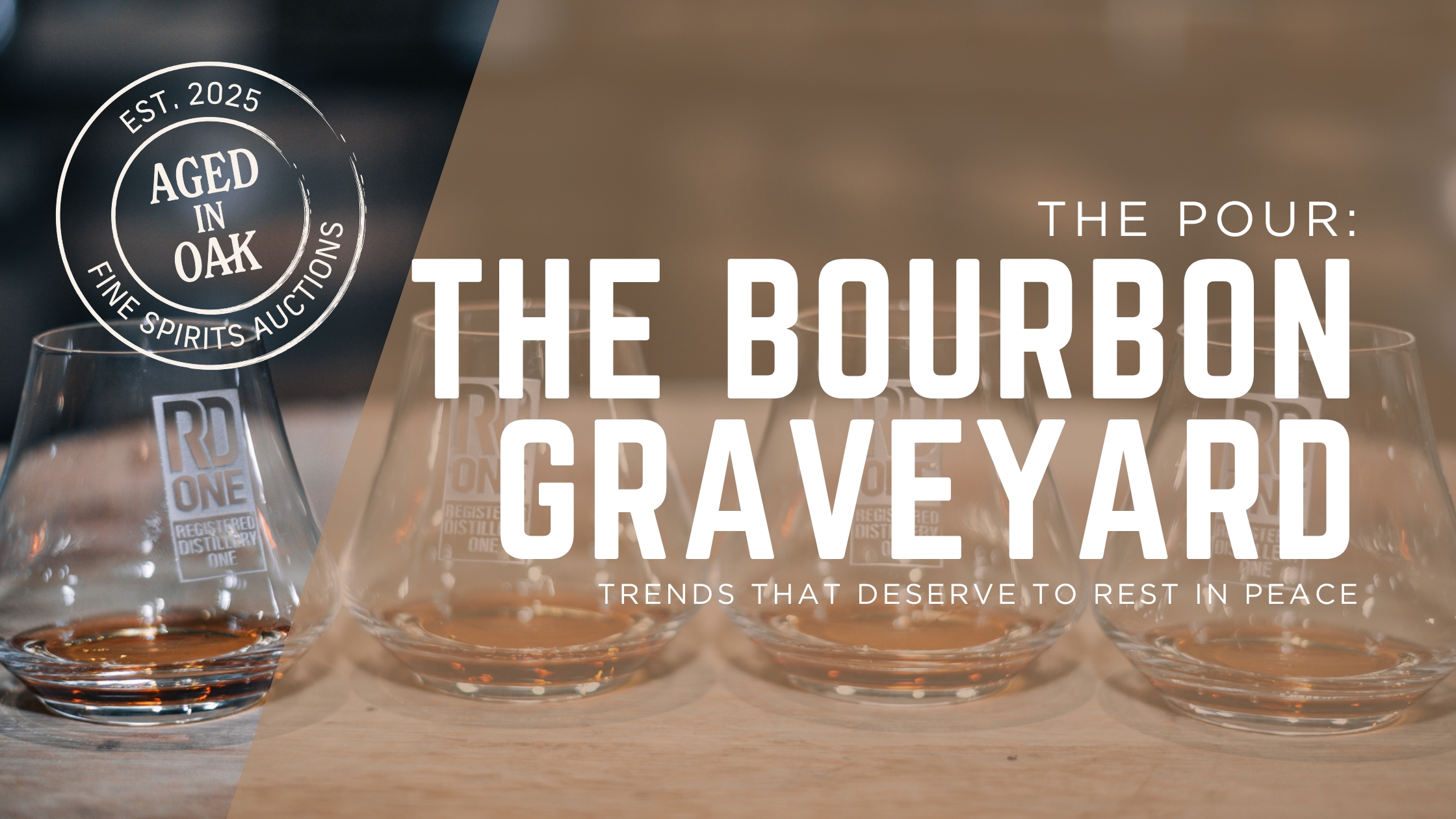
The Bourbon Graveyard: Trends That Deserve to Rest in Peace

The Bourbon Graveyard: Trends That Deserve to Rest in Peace

How to Read a Bourbon Label Like a Pro: Decoding the secrets behind age, proof, and distillery details

How to Read a Bourbon Label Like a Pro: Decoding the secrets behind age, proof, and distillery details

Bringing Bourbon’s Heritage Home: How Aged in Oak captures the soul of Bardstown in the heart of Vernon Hills.

Bringing Bourbon’s Heritage Home: How Aged in Oak captures the soul of Bardstown in the heart of Vernon Hills.
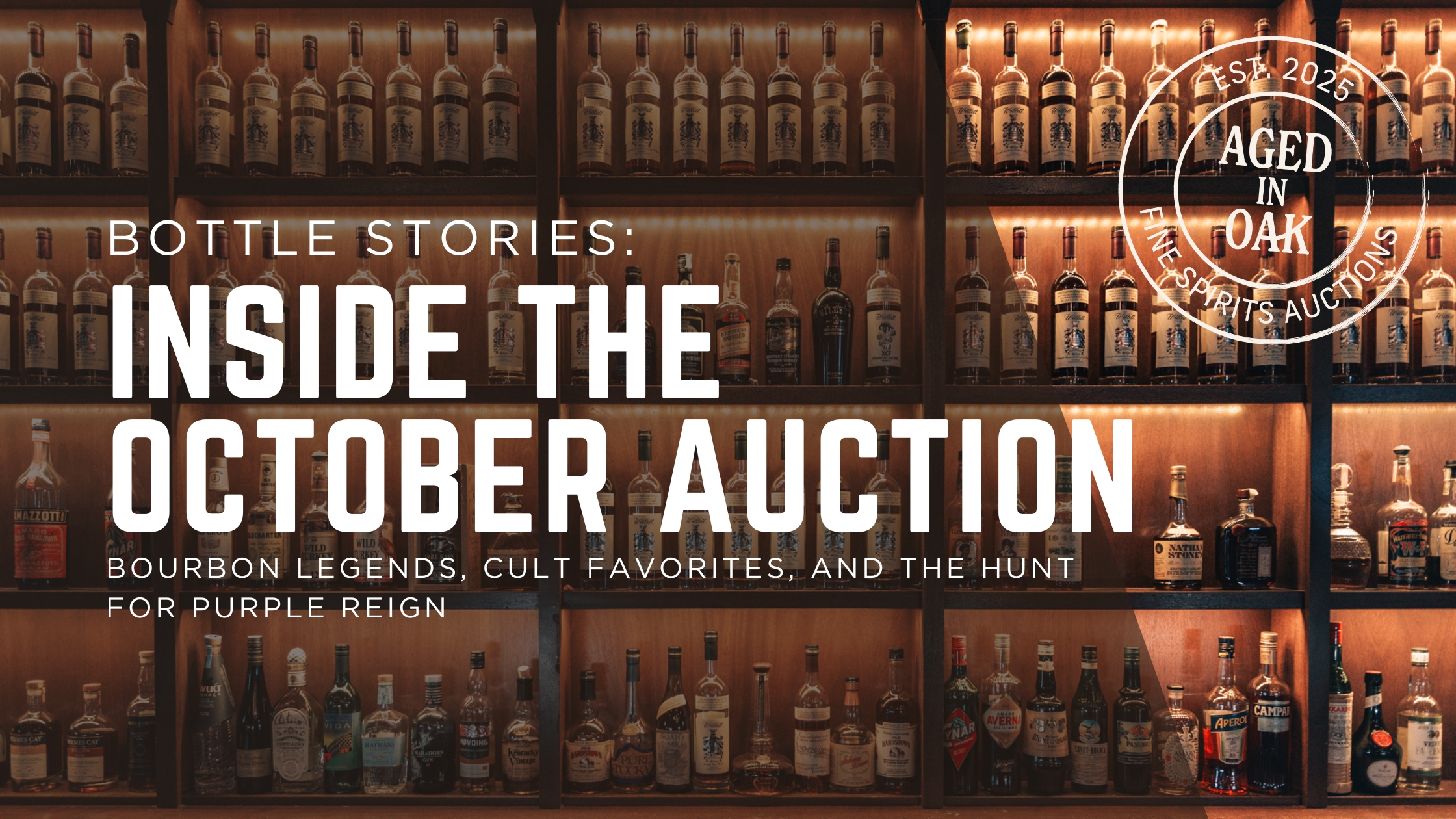
Inside the Auction: Bourbon Legends, Cult Favorites, and the Hunt for Purple Reign

Inside the Auction: Bourbon Legends, Cult Favorites, and the Hunt for Purple Reign
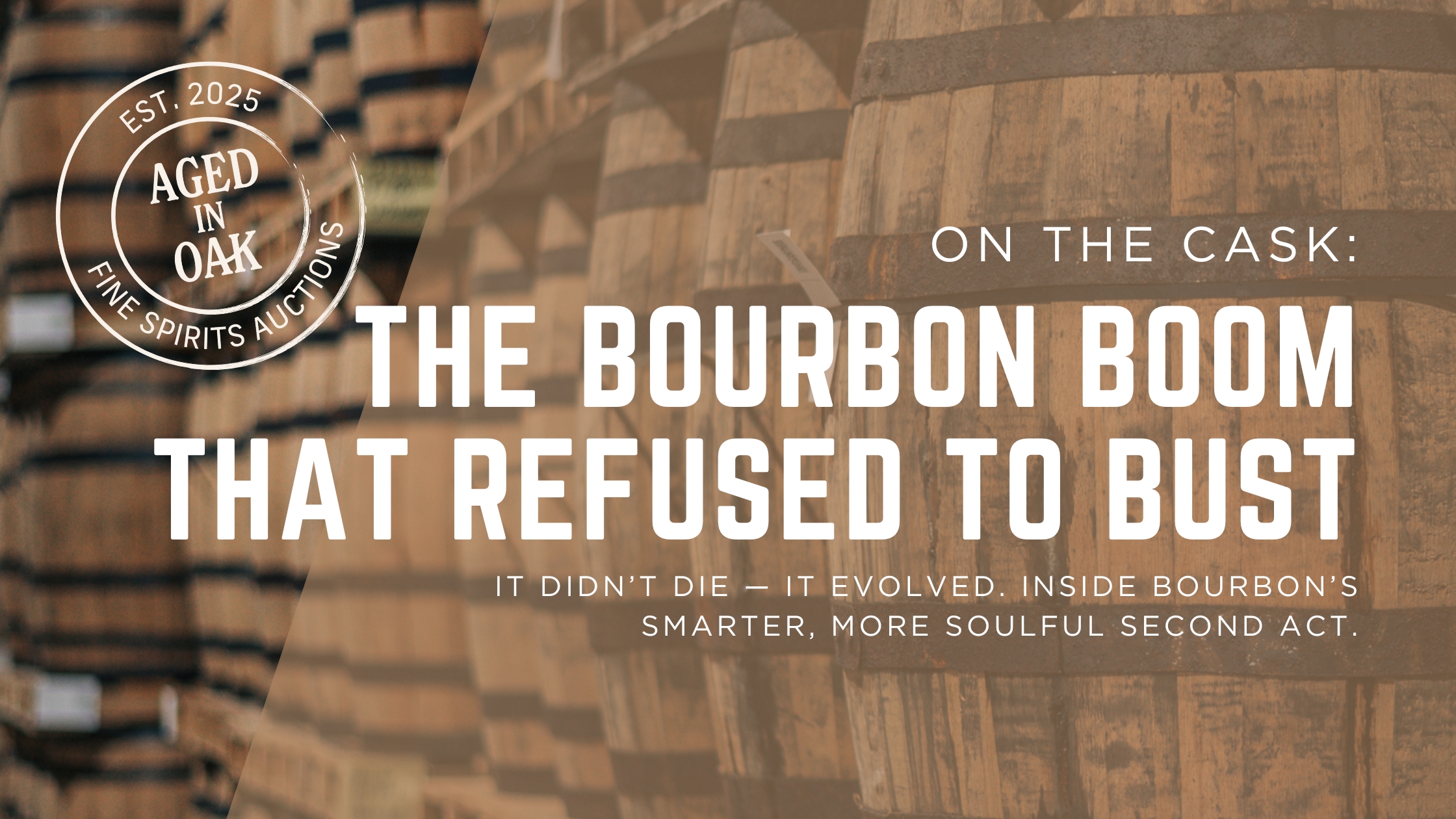
The Bourbon Boom That Refused to Bust

The Bourbon Boom That Refused to Bust
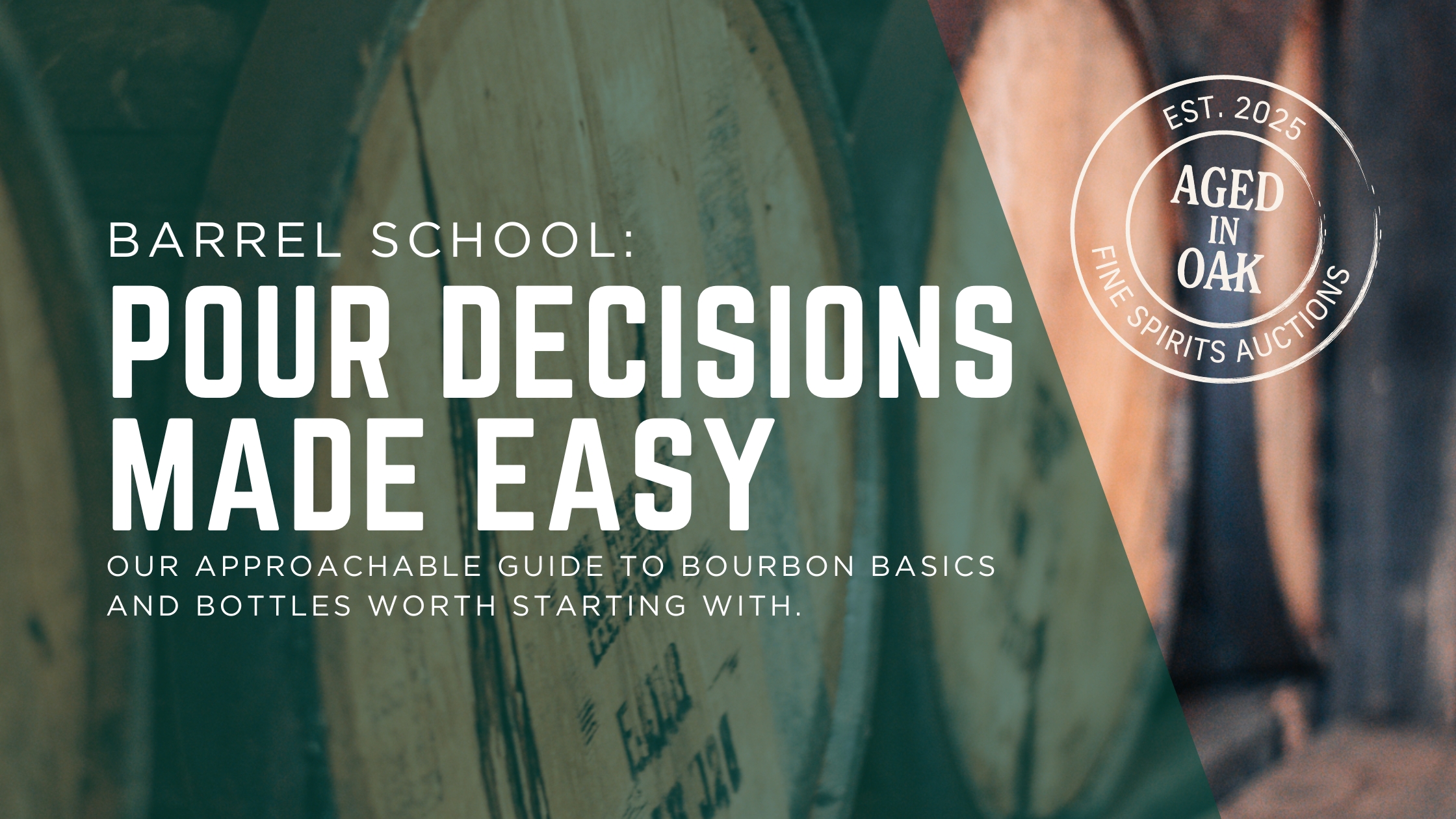
Pour Decisions Made Easy: Our Approachable Guide to Bourbon Basics and Bottles Worth Starting With

Pour Decisions Made Easy: Our Approachable Guide to Bourbon Basics and Bottles Worth Starting With

Bourbon, Community, and a Little Rebellion: Why tastings are the hottest social scene of 2025

Bourbon, Community, and a Little Rebellion: Why tastings are the hottest social scene of 2025

The Bottle That Broke the Rules: The Story of Blanton’s Original Single Barrel

The Bottle That Broke the Rules: The Story of Blanton’s Original Single Barrel

A Toast to Hoptoberfest: New Faces, Great Bourbon, and Unforgettable Conversations

A Toast to Hoptoberfest: New Faces, Great Bourbon, and Unforgettable Conversations
.jpg)
Bourbon Through the Ages: The Stories Behind America’s Spirit
.jpg)
Bourbon Through the Ages: The Stories Behind America’s Spirit
.jpg)
Rare Bourbon, Signature Cocktails, and Community -- Find It All At Aged in Oak in Vernon Hills
.jpg)
Rare Bourbon, Signature Cocktails, and Community -- Find It All At Aged in Oak in Vernon Hills

Fall Into Flavor: Bourbon Recipes That Hit Harder Than Pumpkin Spice

Fall Into Flavor: Bourbon Recipes That Hit Harder Than Pumpkin Spice

What Your Go-To Pour Says About You: A Bourbon Personality Test You Didn’t Know You Needed

What Your Go-To Pour Says About You: A Bourbon Personality Test You Didn’t Know You Needed

From Still to Auction Block: How Bourbon Matures (And Why Oak Is Everything)

From Still to Auction Block: How Bourbon Matures (And Why Oak Is Everything)

Weller Bourbon: The People’s Pappy and the Wheated Whiskey That Broke the Market

Weller Bourbon: The People’s Pappy and the Wheated Whiskey That Broke the Market
.jpg)
Crown Jewel Bourbon Bottles: The Ultimate Collectible Whiskey for Serious Collectors
.jpg)
Crown Jewel Bourbon Bottles: The Ultimate Collectible Whiskey for Serious Collectors

How Global Market Trends Are Shaping the Whiskey Collectible Space in 2025

How Global Market Trends Are Shaping the Whiskey Collectible Space in 2025
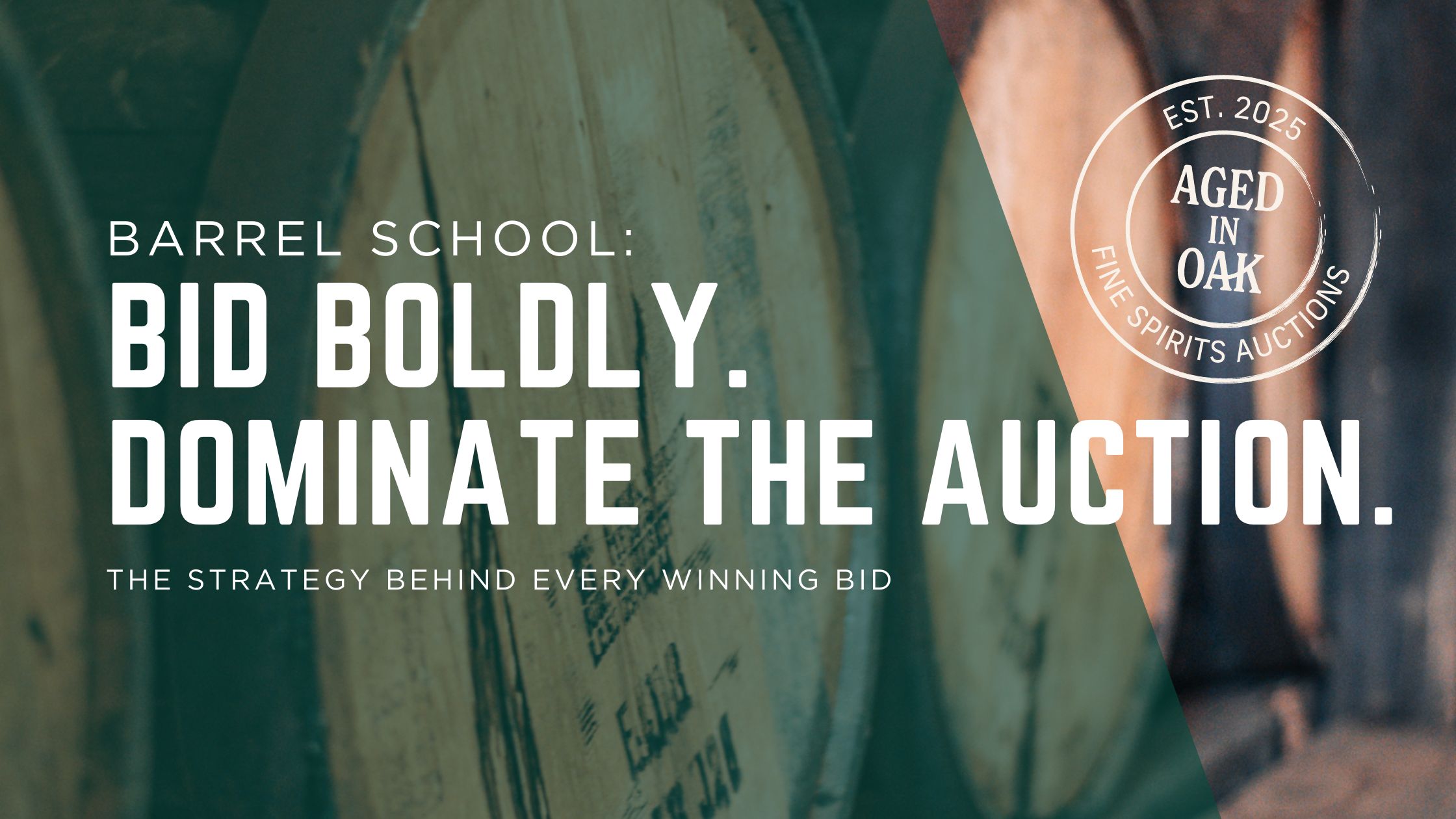
Bid Boldly. Sip Exceptionally. Dominate the Auction.

Bid Boldly. Sip Exceptionally. Dominate the Auction.
.jpg)
We’re in the Daily Herald: Building a Bourbon Community in Vernon Hills
.jpg)
We’re in the Daily Herald: Building a Bourbon Community in Vernon Hills
.jpg)
From Shelf to Sip: The People Who Keep Bourbon Alive
.jpg)
From Shelf to Sip: The People Who Keep Bourbon Alive
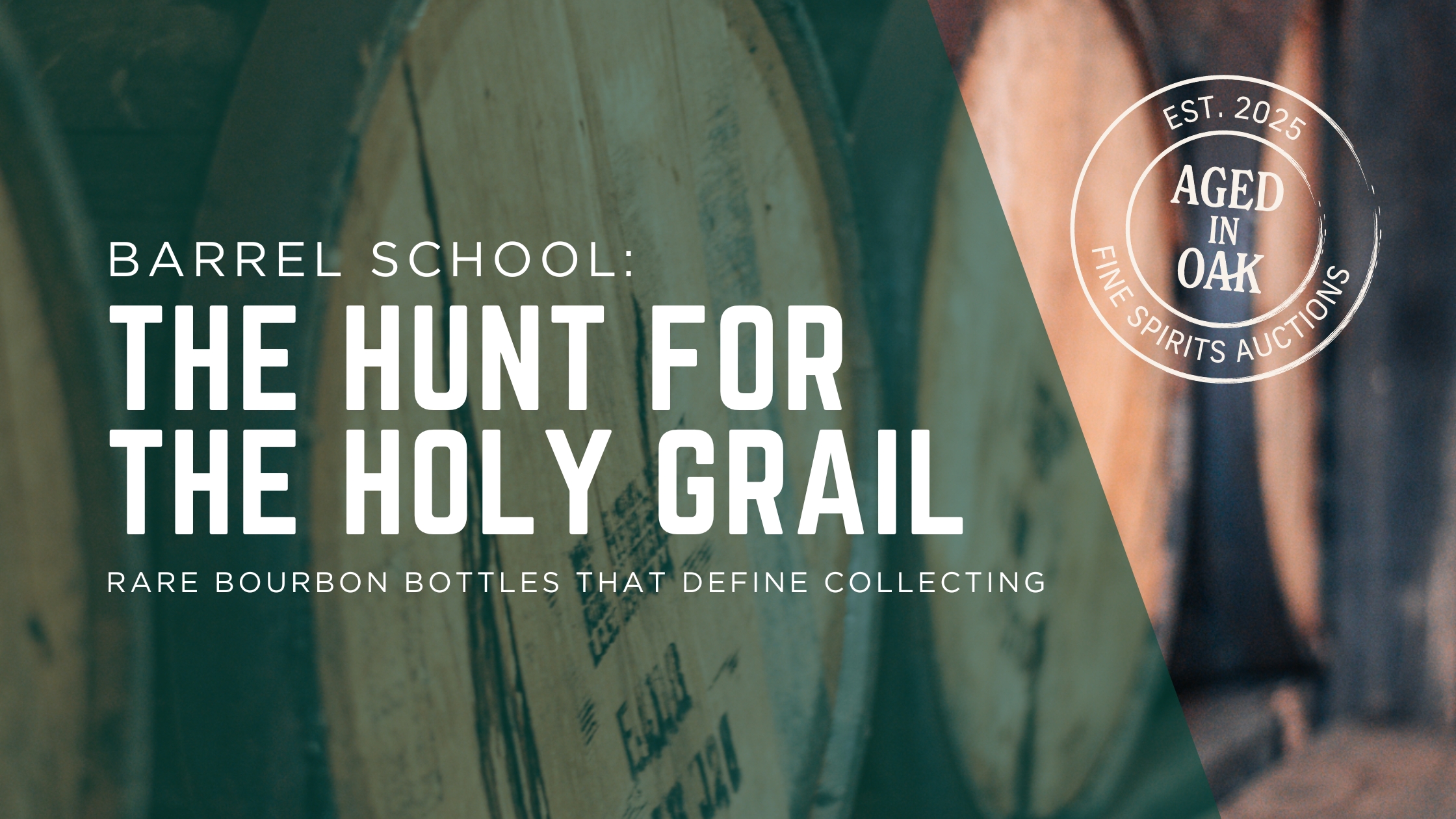
The Hunt for the Holy Grail: Rare Bourbon Bottles That Define Collecting

The Hunt for the Holy Grail: Rare Bourbon Bottles That Define Collecting

Cash Out Without Selling Out: How to Consign Bourbon with Aged in Oak

Cash Out Without Selling Out: How to Consign Bourbon with Aged in Oak
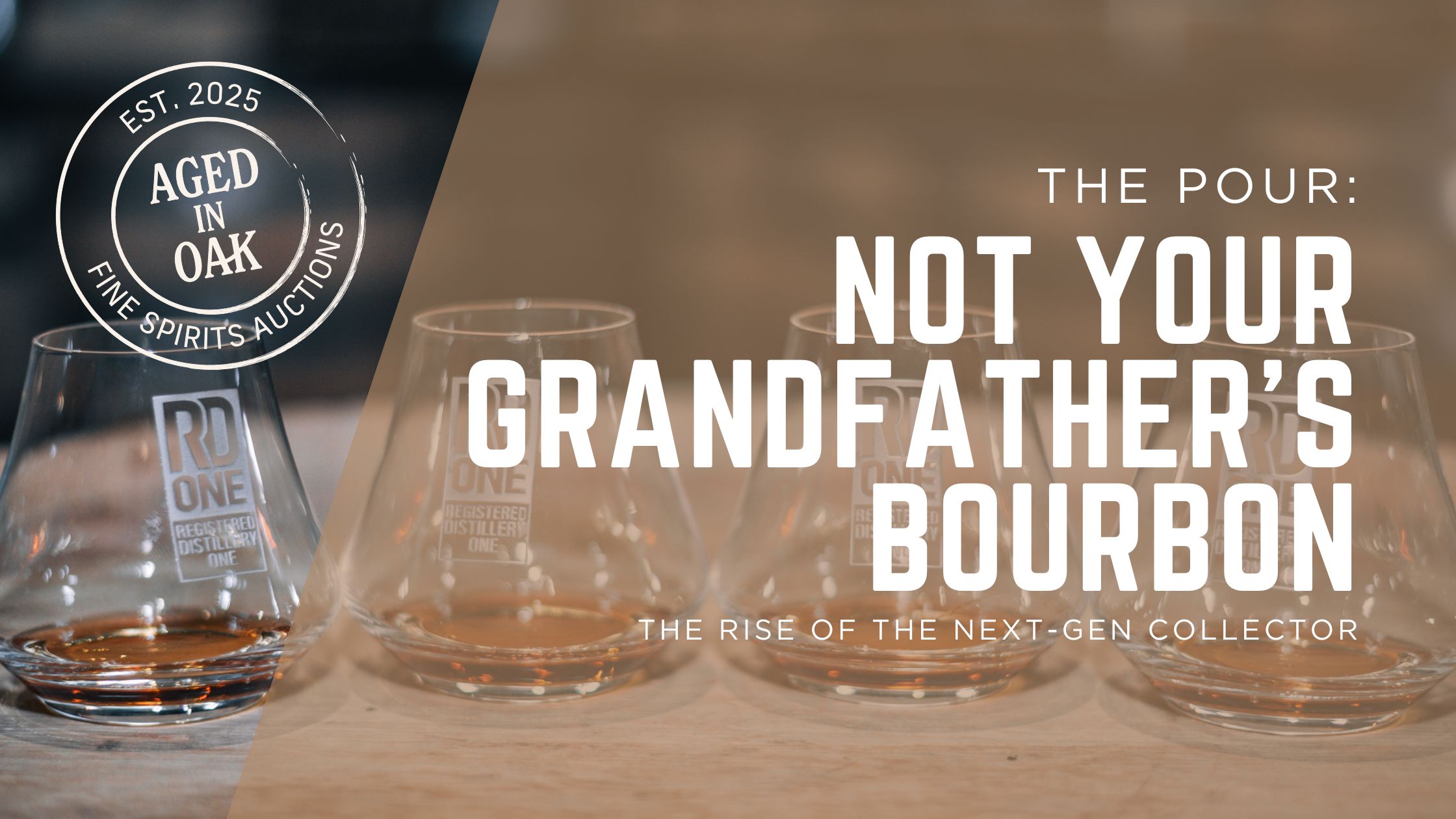
Not Your Grandfather’s Bourbon: The Rise of the Next-Gen Collector

Not Your Grandfather’s Bourbon: The Rise of the Next-Gen Collector
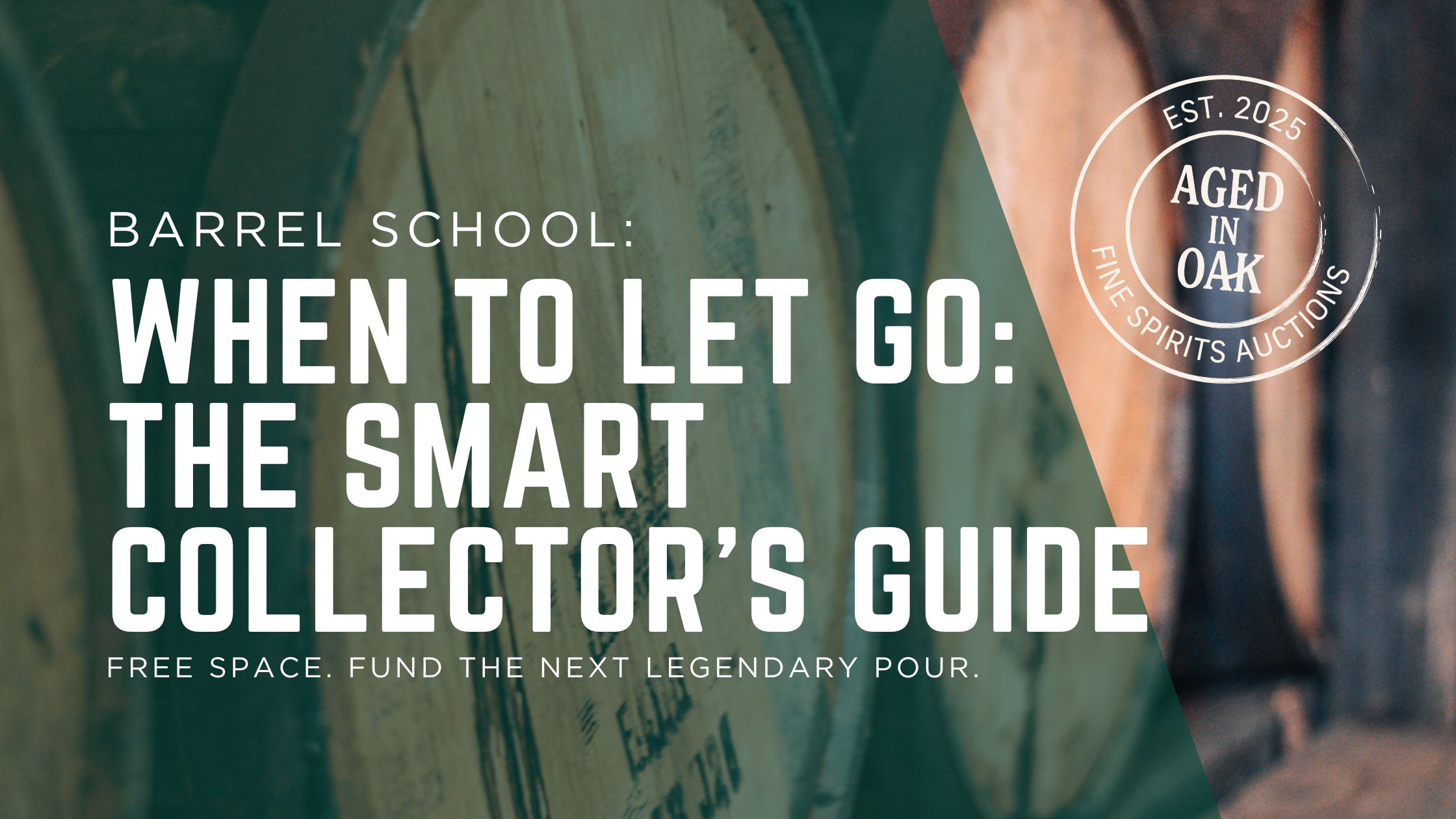
When to Let Go: Knowing It’s Time to Consign Your Bourbon

When to Let Go: Knowing It’s Time to Consign Your Bourbon
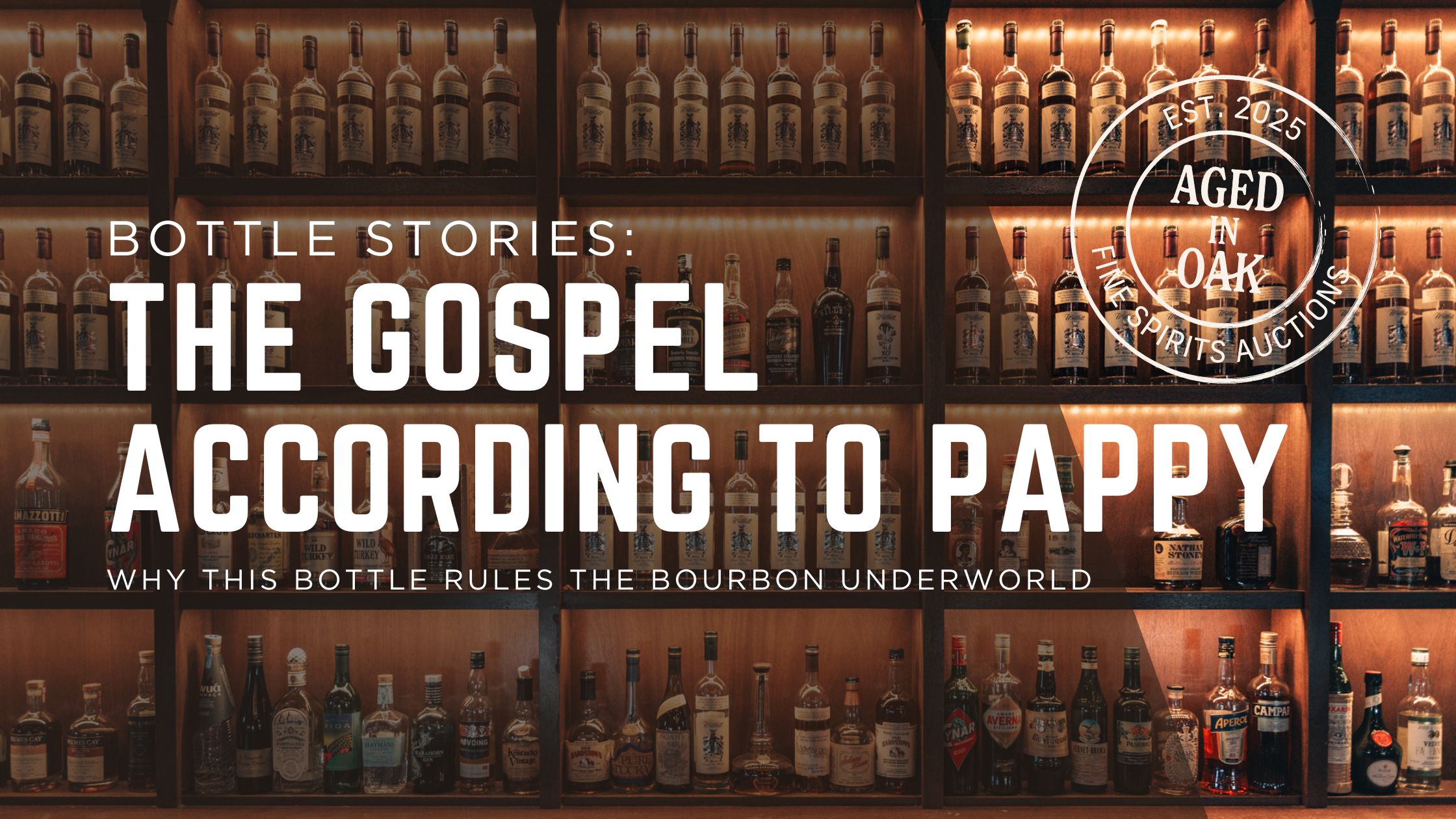
The Gospel According to Pappy: Why This Bottle Rules the Bourbon Underworld

The Gospel According to Pappy: Why This Bottle Rules the Bourbon Underworld

Tapping a Bourbon Barrel with RD1 Distillery

Tapping a Bourbon Barrel with RD1 Distillery

Crafting the "Circa 1856 Old Fashioned" at Chicken Cock

Crafting the "Circa 1856 Old Fashioned" at Chicken Cock

Aged in Oak Debuts Online Bourbon Community May 15, with Auctions and Bottle Appraisals Coming Summer 2025


